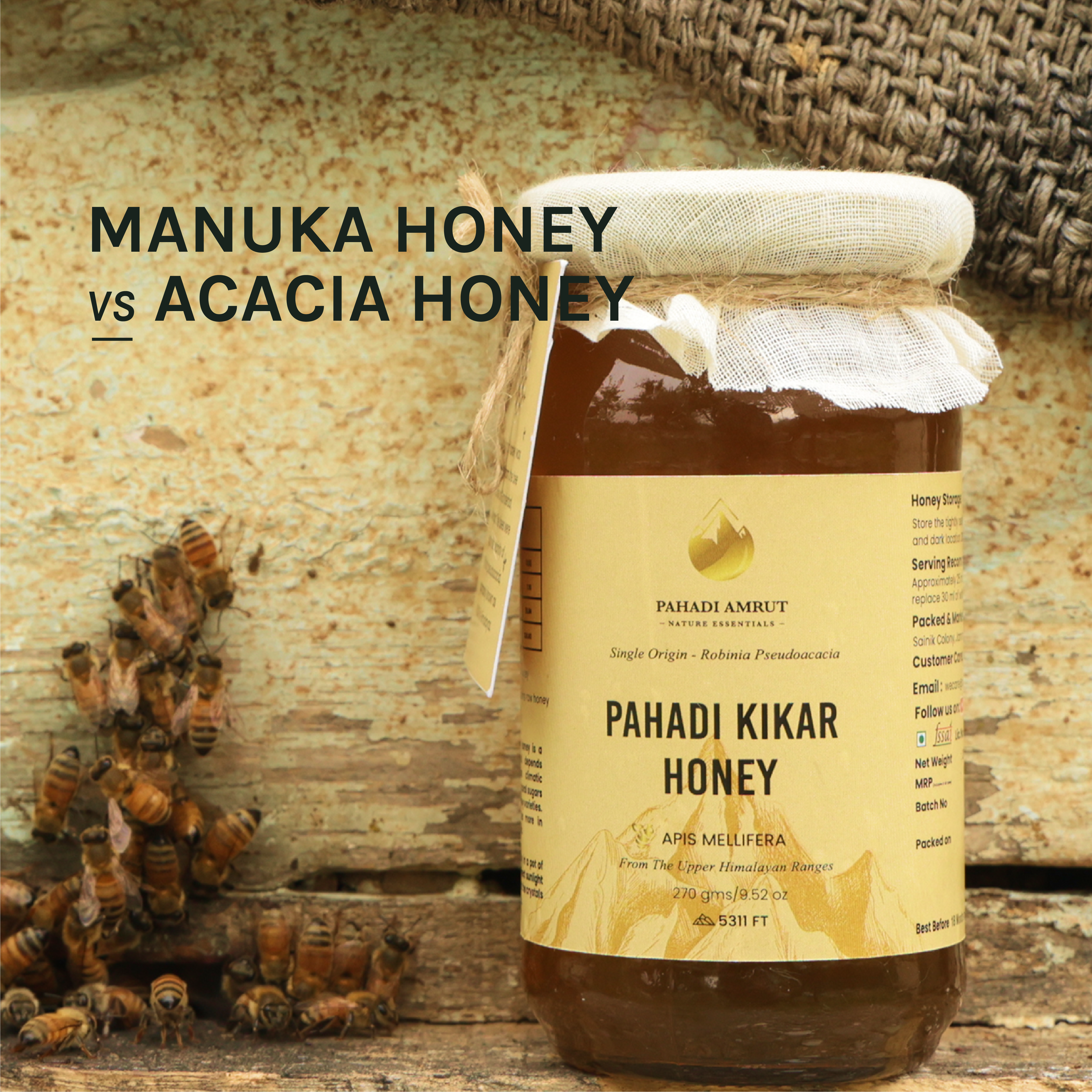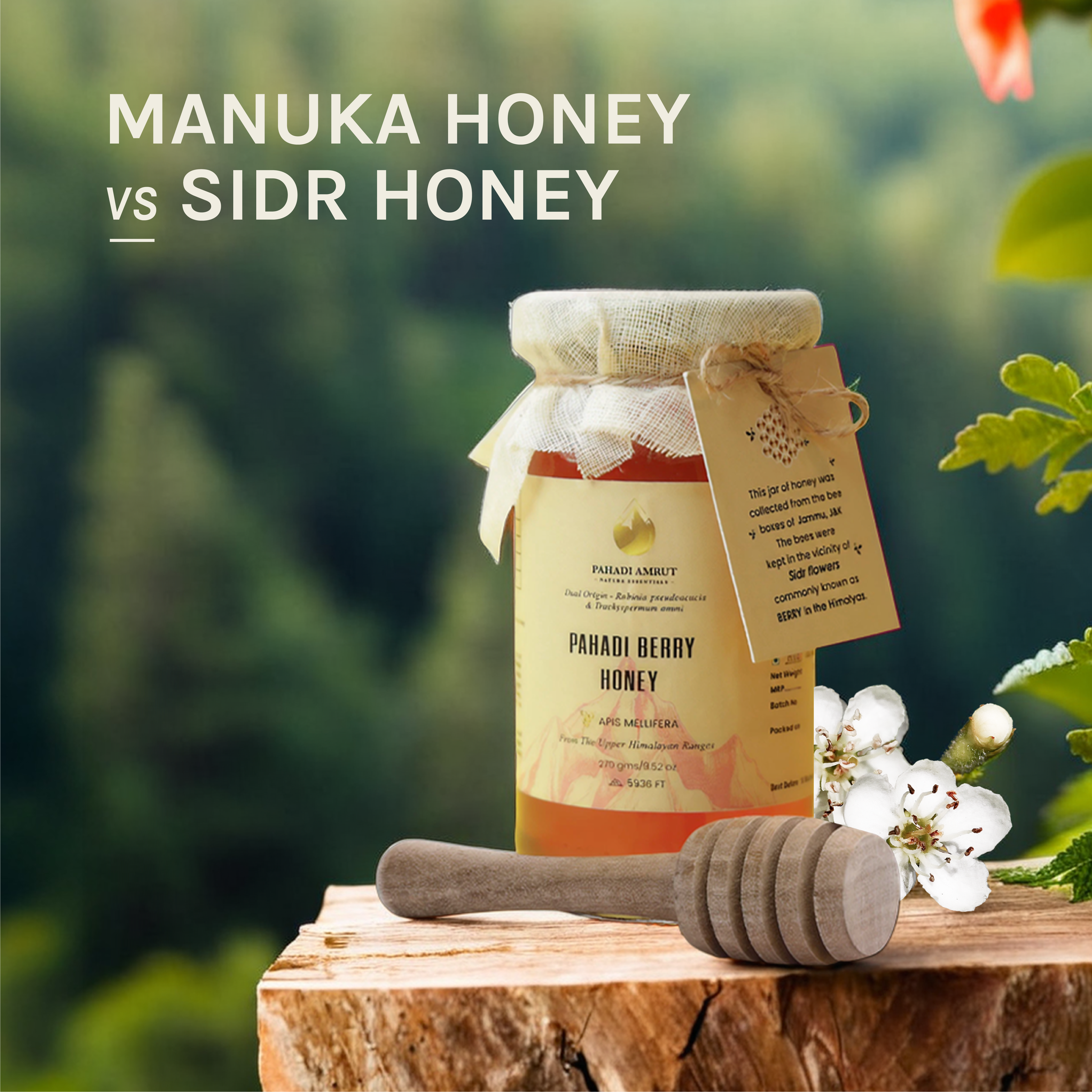Ayurveda has valued almonds for over 4000 years for their benefits to the heart, brain, and overall health. Domesticated almonds first appeared in the Early Bronze Age (3000–2000 BC).
Almonds are among the top three most-consumed nuts worldwide, with global production exceeding 1.5 million metric tons annually.
Among all varieties, Kashmiri Mamra Almonds are known as the "king of almonds," as they make up just 3-4% of the world's almond production, making them a rare and premium choice.
Their high oil content (over 50% healthy fats) and nutrient density set them apart.
However, due to their high demand and premium price, fake or adulterated Mamra almonds have flooded the market, making it tricky to find the real ones.
But don’t worry. Identifying authentic Mamra almonds is easier than you think.
Let’s go through simple yet effective tips to help you choose authentic Mamra almonds and avoid the fakes.
Understanding Mamra Almonds?
Mamra Almonds are premium-quality almonds known for their rich oil content, distinct curved shape, and superior nutritional value. Unlike supermarket almonds, Mamra Badams are crunchier, denser, and packed with essential vitamins, minerals, and healthy fats. They are considered the most luxurious and nutrient-rich almonds, often associated with royalty and high-status consumption.
Origin of Mamra Almonds
Mamra Almonds are cultivated in three major regions: Kashmir (India), Iran, and Afghanistan. Each region produces slightly different varieties of Mamra Badam, with Kashmiri Mamra Almonds being the rarest and most premium.
Kashmiri Mamra Badam (India)
Kashmiri Mamra Badam is grown in Kashmir's cold, mineral-rich valleys, where the climate and soil conditions make it naturally pure and highly nutritious. Unlike other almonds, Kashmiri Mamra Badams are smaller, sweeter, and packed with essential nutrients.
These almonds are handpicked and sun-dried, ensuring minimal processing and maximum retention of their natural oils and health benefits. Because they are organically grown without chemical fertilizers or pesticides, they are considered the purest and most sought-after Mamra Badam variety.
Iranian Mamra Almonds
Iran is one of the largest producers of Mamra Almonds. Iranian Mamra Badams are larger but contain less oil compared to Kashmiri Mamra Badams. They have a mildly sweet taste and are widely available in international markets.
Afghani Mamra Almonds
Afghanistan’s mountainous terrain is another key region for Mamra Almond cultivation. Afghani Mamra Badams are known for their rich, nutty flavor and higher oil content than Iranian varieties. They are denser, crunchier, and packed with healthy fats, making them a great option for those looking for a nutrient-rich almond variety.
Cultivation of Kashmiri Mamra Badam
Kashmiri Mamra Almonds are cultivated in small orchards in the cold, mountainous regions of Kashmir, where the climate, soil, and altitude contribute to their exceptional quality.
-
These almonds grow in sandy, loamy, and well-drained soil, requiring a specific pH balance for optimal yield.
-
The trees are resilient to harsh winters, but they need cold temperatures for proper flowering and fruiting.
-
Farmers in Kashmir use traditional, organic farming methods, avoiding chemical fertilizers or pesticides, ensuring 100% natural and pure almonds.
Unlike California almonds, which are produced on a mass scale using hybrid farming, Kashmiri Mamra Badams are limited in production, making them rarer and more expensive.
Nutritional Facts of 100 g Kashmiri Mamra Badam
Mamra Badams are known for their high nutritional value, particularly Kashmiri Mamra Almonds, which are packed with essential nutrients that promote overall health.
|
Nutrient |
Amount per 100 grams |
|
Calories |
580 kcal |
|
Total Fat |
50 gm | 78% of Daily Value |
|
Saturated Fat |
3.8 gm | 20% of DV |
|
Sodium |
1 mg | 1% of DV |
|
Total Carbohydrate |
21 gm | 7% of DV |
|
Dietary Fiber |
13 gm | 52% of DV |
|
Sugar |
4.7 gm |
|
Protein |
21 gm | 42% of DV |
|
Calcium |
27% |
|
Iron |
24% |
Now, let’s go through the top characteristics to identify the authentic Mamra almonds.
Key Characteristics of Authentic Mamra Almonds
Mamra almonds are renowned for their unique qualities that distinguish them from other almond varieties. Understanding these characteristics can help consumers identify genuine Mamra almonds and appreciate their superior attributes.
Physical Appearance
Authentic Mamra almonds have a distinctive curved and elongated shape, setting them apart from the more commonly found California almonds, which are typically broader and flatter.
Texture & Taste
Mamra almonds are celebrated for their crispy and crunchy texture, offering a satisfying bite. Their flavor is rich and nutty, often described as sweeter and more intense compared to other almond varieties.
Color
The skin of Mamra almonds is usually light brown, sometimes exhibiting a slightly wrinkled surface. This natural appearance indicates minimal processing, preserving their authentic quality.
Oil Content
One of the standout features of Mamra almonds is their high oil content, which comprises up to 50% of their composition. These healthy monounsaturated fats contribute to their rich flavor and numerous health benefits
But due to the premium status and higher market value of Mamra almonds, they are sometimes subject to adulteration. So, you need to avoid those adulterated mamra almonds for better health results.
Also Read: Health Benefits of Mamra Almonds
Common Adulterations and How to Avoid Them
Being aware of common adulteration methods and knowing how to identify them can help consumers make informed purchasing decisions.
A common adulteration involves mixing almonds with apricot kernels, which are similar in appearance but differ in taste and nutritional value. Another is that suppliers use chemical agents to enhance the appearance of almonds, giving them a shinier look. This process can involve harmful substances that may pose health risks.
Here are a few inspection tests you can conduct:
-
Matte Finish: Authentic Mamra almonds typically have a natural matte finish. Overly shiny almonds may indicate polishing.
-
Residue Check: Rub the almonds between your fingers; if they leave a residue or feel oily, they may have been chemically treated.
Note: Some vendors might substitute Mamra almonds with cheaper almond varieties that are less nutritious and flavorful. You need to familiarize yourself with the unique features of Mamra almonds, such as their curved shape and high oil content.
Also, purchase from reputable sellers who provide authenticity certifications or have positive customer reviews.
Where To Buy Pure And Authentic Mamra Almonds From?
When it comes to authentic Mamra almonds, quality matters. Many almonds in the market are mixed, chemically processed, or low in nutrients.
That’s why it’s important to buy from a trusted source that provides pure, unadulterated, and nutrient-rich Mamra almonds.
At Pahadi Amrut, we bring you the finest Kashmiri badam giri, sourced directly from the fertile valleys of Kashmir, India. Our farmers use traditional cultivation methods to retain the high oil content and natural nutrients, making these almonds highly beneficial for health.
-
100% Pure & Authentic – No mixing, no chemical treatments, just real Mamra Badam.
-
Naturally High in Nutrients – Rich in healthy fats, proteins, and antioxidants.
-
Handpicked & Hygienically Packed – Each batch is carefully checked and tested before packaging to maintain freshness.
Experience the best of nature with Pahadi Amrut’s premium Mamra almonds. Order now and enjoy the purest, most nutrient-dense almonds straight from Kashmir!



